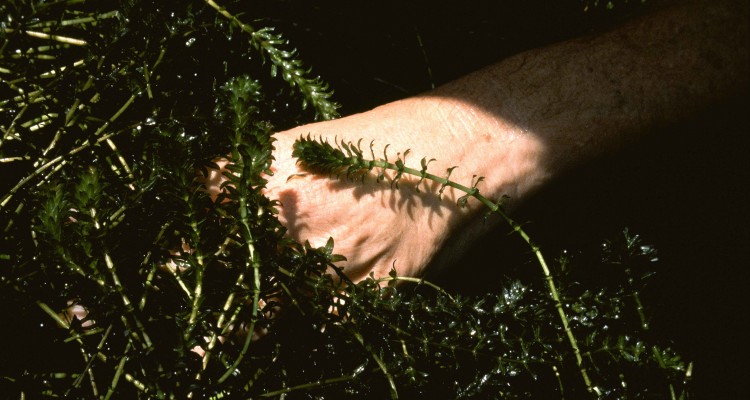By Helen Stec
Several fragments of Hydrilla verticillata—a highly invasive aquatic plant—were found in Coventry Lake by a University of Connecticut aquatic plant biology class. The fragments were identified by Dr. Donald Les, an Ecology and Evolutionary Biology professor at the University.
Dr. Les is very familiar with Hydrilla. In the mid-1990s, he was the first person to find the plant in New England when he identified a specimen found in Mystic, Connecticut.
Hydrilla has spread westward from Mystic around the coastal areas of Connecticut, such as the Silvermine River. However, none of these sites are as large or associated with as much recreation as Coventry Lake. Hydrilla fragments could get snagged on boat trailers and be inadvertently transported to other bodies of water.
“It has a lot of recreation going on and a lot of use and a lot of people coming in and out of that boat launch,” said Dr. Les. “It really becomes a serious threat to the entire area because of the potential for moving this plant not only in Coventry Lake—where it will eventually become a serious problem if it’s not controlled in some way—but it can spread to all the other lakes in the area just by boat traffic.”
The extent and location of the plant within the lake is not yet known. Fragments were found floating in the water, meaning they were probably cut from established plants by a boat propellor and floated to the shore line, according to Dr. Les.
The Connecticut Department of Energy and Environmental Protection is currently trying to determine exactly where the plant is and how much of it is in the lake. It is not yet known what hydrilla will do in Coventry Lake because it’s never been found in a body of water that large before, but Dr. Les believes the consequences will be extremely negative.
“It literally completely chokes the entire pond from top to bottom, and when I’m saying that I’m talking about a solid mass of hydrilla from the very bottom to the surface of the water with all these stems packed like sardines together to form just almost like a carpet—a dense, thick mat of vegetation that completely excludes life to the bottom so no other plants are growing there,” he said.
The carpet of vegetation could displace native species that are more desirable to the ecology of the system. This would keep people from fishing, boating, and swimming.
As far as Dr. Les knows, there is no solution to this problem. A new aquatic species from a different part of the world is introduced to the New England area about once every ten years, and every single one of those species is still growing—all efforts to remove them have failed.
“As far as I know, there is no successful complete eradication for, really, any of these terrible aquatic weeds that have come in,” Dr. Les said.
Hydrilla produces small, vegetative buds that break loose from the plant and mix into the sediments of the bodies of water they’re located in. Thousands of buds can be in the sediments, and it only takes one to grow a new plant, making hydrilla virtually impossible to eradicate.
“If you don’t get every single bud out of the lake sediments, it’s going to come back, and if you think how big Coventry Lake is, it’s enormous, and that’s because of how much bottom there is,” Dr. Les said.
The only solution that may be feasible, according to Dr. Les, is a persistent management scheme, which may involve the use of herbicides and focuses on keeping the growth of the plant in control, rather than trying to achieve total eradication.
Dr. Les’s discovery is just the beginning of the story as DEEP prepares to survey Coventry Lake over the next several weeks. DEEP’s Boating Division is also increasing the number of staff at the lake’s boat launch in order to inspect boats and trailers and inform boaters about invasive species and proper boat decontamination methods.
Individuals who would like to report possible sightings of aquatic invasive species can reach DEEP’s Inland Fisheries Division at 860-424-3474.


